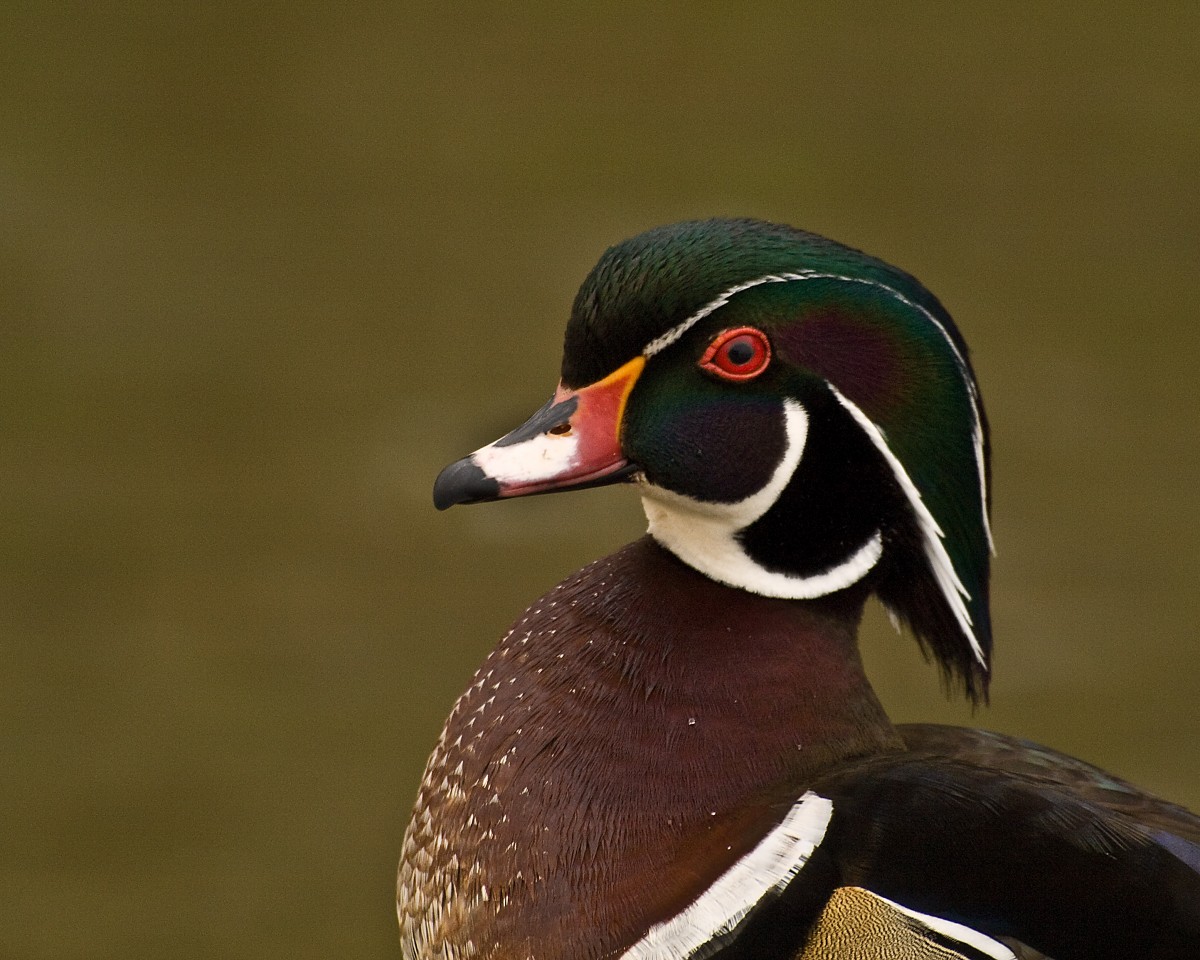My husband, John, and I have lived on the southeast side of Clark Lake for 39 years. We have always been quite amazed at the variety of wildlife found in this area in spite of so much human activity, especially in the summer months. However, if one is observant and will take the time to listen to nature’s sounds, many interesting discoveries can be made.
One of the more rewarding discoveries for me was to learn that a few species of ducks do land on trees and even nest in them. Hooded mergansers and wood ducks are in this category. In my opinion, the male wood duck, with its brilliant plumage has the most beautiful coloring of any duck species. Starting in April when the trees are bare it is easy to see the males and females flying from tree to tree looking for nesting sites and if you listen carefully you will hear their high-pitched cry as they fly away. They nest in holes in mature oak trees close to water and we happen to have the ideal habitat for them in our front yard. In fact if you happen to drive by our house by boat you may see the metal flashing on a couple of our trees. This is to keep predators like raccoons from eating the wood duck eggs. Once the female has chosen a nesting site she will lay one egg every other day, without incubating, until the last egg has been laid. When she starts the incubating process she will only leave the nest in the early morning and at dusk to feed.  In about 30 days the eggs will hatch. After all of the chicks have hatched (this may take 24 hours) and the coast is clear, she will fly down to the ground or the water and call to her chicks. One by one they will start jumping. In our yard their nests are at least 30 feet high and the little ducklings drop and bounce on the ground without injury. The female will gather her chicks together and wait until the last duckling drops. Many times a chick will hatch an hour later and most of the time the mother is in the water waiting. Once the mother and ducklings are in the water they will hide in the bushes until it is safe to move on. We don’t really know where the brood goes after hatching. We have guessed that because we never see them on the lake, they must go over the dam and into the river. Maybe the new DamCam will verify our theory.
In about 30 days the eggs will hatch. After all of the chicks have hatched (this may take 24 hours) and the coast is clear, she will fly down to the ground or the water and call to her chicks. One by one they will start jumping. In our yard their nests are at least 30 feet high and the little ducklings drop and bounce on the ground without injury. The female will gather her chicks together and wait until the last duckling drops. Many times a chick will hatch an hour later and most of the time the mother is in the water waiting. Once the mother and ducklings are in the water they will hide in the bushes until it is safe to move on. We don’t really know where the brood goes after hatching. We have guessed that because we never see them on the lake, they must go over the dam and into the river. Maybe the new DamCam will verify our theory.
This spring we observed three hatchings in our yard. There were two hatchings on May 19th just a few hours apart and one a week later on May 26th. Each brood contained 10-13 ducklings.  Most of the ducklings do not make it to maturity. Some of their predators are snapping turtles, pike, great blue herons and hawks. We need to mention that we have had wood duck hatchings as late as July 8th. This may be due to a lack of nesting spots or re-nesting because of predation. Even if you don’t have mature trees near the lake you can make a wood duck nesting box and attach it to a pole in the water. There are websites that tell you how you can make one or order one. There are also web cameras that you can buy and attach to the roof of a nesting box. We have done that for years and it is fascinating to see into the secret lives of wood ducks.
Most of the ducklings do not make it to maturity. Some of their predators are snapping turtles, pike, great blue herons and hawks. We need to mention that we have had wood duck hatchings as late as July 8th. This may be due to a lack of nesting spots or re-nesting because of predation. Even if you don’t have mature trees near the lake you can make a wood duck nesting box and attach it to a pole in the water. There are websites that tell you how you can make one or order one. There are also web cameras that you can buy and attach to the roof of a nesting box. We have done that for years and it is fascinating to see into the secret lives of wood ducks.
-Diane Deming










